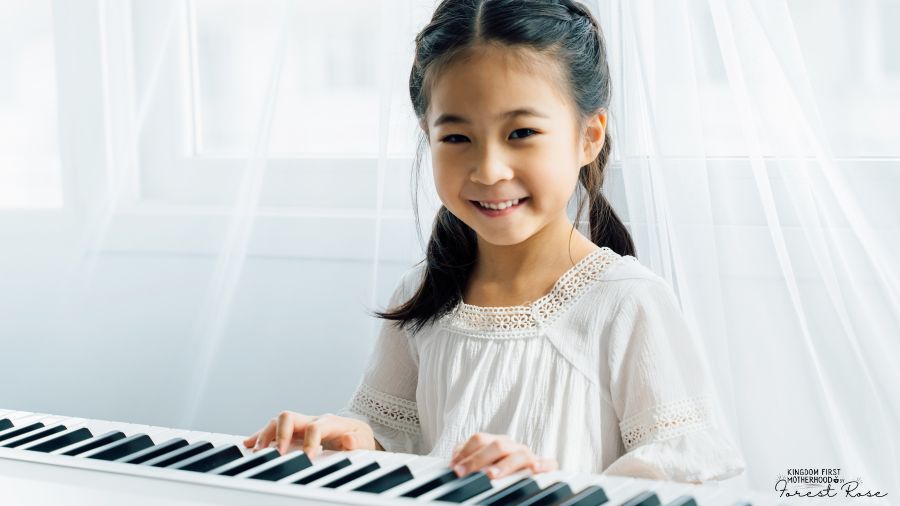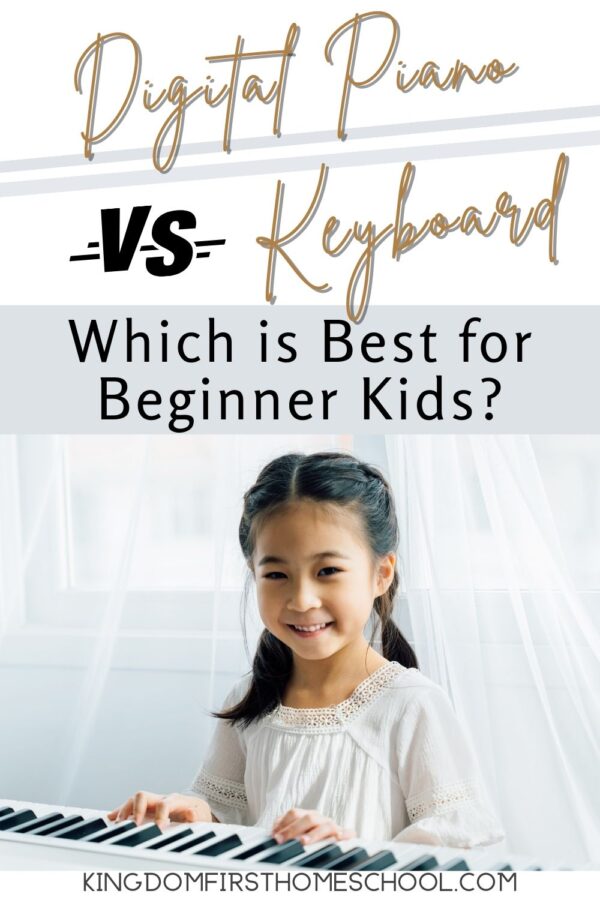When it comes to introducing children to the world of music, one of the most significant decisions parents have to make is choosing the right instrument. In the realm of keys, the debate often comes down to digital piano vs keyboard. Both have their advantages and are popular choices, but which one is more suitable for beginner kids? Let’s delve into the specifics to help you make an informed decision.

Contents
Understanding the Basics: Digital Piano and Keyboard
Before comparing them, it’s essential to understand what each instrument offers.
Digital Piano
Digital pianos are designed to replicate the sound and feel of an acoustic piano. They typically have 88 weighted keys, which means they mimic the hammer action of a traditional piano, offering a realistic touch. This can be particularly beneficial for beginners as it develops proper finger strength and technique from the start. Sound-wise, digital pianos produce rich and authentic tones, often sampled from high-end acoustic pianos.
Keyboard
Keyboards, on the other hand, are more versatile and portable. They usually have fewer keys (61 to 76 keys are common), which are unweighted or semi-weighted. This makes them lighter and easier to play, which can be less intimidating for young beginners. Keyboards come with a variety of sounds and built-in rhythms, which can make playing more fun and engaging for kids. They also often include learning features like built-in lessons or light-up keys.
Considerations for Choosing Between Digital Piano and Keyboard
Here are some of the considerations to keep in mind when making your decision:
1. Goal of Learning
If your child shows a keen interest in classical music or you’re considering formal music lessons, a digital piano is likely the superior option. This instrument closely mimics the acoustic piano, both in sound and feel, providing a more authentic piano-playing experience. This is crucial for developing the correct technique, especially for those who may later transition to an acoustic piano.
Moreover, for young musicians aspiring to play classical pieces, the digital piano’s range and sound dynamics offer a more fulfilling experience. However, if your child is inclined towards a variety of musical genres or is just starting to explore their musical interests, a keyboard could be more appropriate. Keyboards offer a wide array of sounds and rhythms, catering to diverse musical tastes. This variety can make the learning experience more engaging and less monotonous, which is often essential for maintaining a child’s interest in learning music. The interactive nature of keyboards, with their multiple sound options, can inspire creativity and exploration in music.
2. Space and Portability
Digital pianos, with their larger size and heavier build, can be less suitable for homes where space is limited. Their design, often intended to replicate traditional pianos, requires a dedicated area for placement. This can be a significant consideration for families living in smaller spaces. In contrast, keyboards are known for their portability and compact design. They are an ideal choice for families needing an instrument that can be moved easily or stored away when not in use. This flexibility makes keyboards especially appealing for those who might need to transport the instrument to different locations, such as music lessons or performances.
3. Budget
Budget is another crucial factor. Generally, keyboards are more affordable than digital pianos. If you’re not ready to make a significant investment at the early stages of your child’s musical journey, a keyboard can be a wise choice.
4. Features for Learning
Keyboards are often equipped with a range of features that can significantly aid in the learning process. These features include built-in lessons, interactive games, and the capability to connect to various educational apps and software. Such tools can be instrumental in keeping a child engaged and motivated. They offer a fun and interactive approach to learning, which can be especially appealing to young learners.
The ability to connect to apps also allows for a more customized learning experience, catering to the individual needs and pace of the learner. In contrast, digital pianos, while excelling in providing an authentic piano experience, may lack these interactive and educational features. They are typically focused on emulating the sound and feel of an acoustic piano, which is essential for serious piano studies but may not offer the same level of engagement for a beginner, especially young children.
5. Sound Quality
In terms of sound quality, digital pianos generally have the advantage over keyboards. They are engineered to produce a sound that closely resembles that of an acoustic piano, offering a richer and more authentic tone. This is particularly important for students focusing on classical or traditional piano playing, as it provides a more accurate representation of how pieces are intended to sound. However, keyboards, while they may not match the sound fidelity of digital pianos, still offer a range of sound options that are more than adequate for initial learning and casual playing.
6. Touch Sensitivity
The weighted keys of a digital piano offer touch sensitivity, which is crucial for developing dynamics in playing. This feature is often missing or less refined in keyboards. If you want your child to develop a nuanced playing style, a digital piano is preferable.
So as you can see choosing between a digital piano and a keyboard for beginner kids depends on various factors, including the child’s interest, learning goals, space, budget, and the importance of sound quality and touch sensitivity. For a child showing serious interest in piano playing, especially in classical or formal music, a digital piano is a better investment. It offers a realistic playing experience, which is essential for developing proper technique and finger strength.
On the other hand, if the goal is to explore music more broadly or if there are constraints like budget and space, a keyboard is a great starting point. Its variety of sounds, portability, and interactive learning features can make music learning fun and engaging for kids.
Remember, the best choice will always be the one that aligns with your child’s interests and your family’s needs. Whether it’s a digital piano or a keyboard, the key is to encourage a love for music and provide a foundation that keeps the child engaged and excited about learning.

For more homeschooling inspiration, tips and encouragement, make sure to follow KFH on Facebook, Pinterest, Instagram and Twitter, and subscribe to our Newsletter for some FREE GOODIES!
Forest Rose is a God Loving, Blessed Wife, & Mama to 3 girls. She’s passionate about lifting moms out of the trenches that are discouraged, overwhelmed, or feeling alone or isolated. Her hope is to point them to Christ and equip them to rise up with a newfound hope and joy within, that He alone can provide. Besides blogging, she also loves to create printables!



Leave a Reply